 W
WCostume coordination is a method of dressing actors, employees or a person or group for theatrical productions and any venue requiring a fully realized character. It consists of pulling or renting existing stock clothing and costumes, altering them as needed to be used as stage clothes in a theatrical production, oversee their use, cleaning and eventual return to storage or rental company. Just as with costume design, the costume coordinator creates the overall appearance of the characters, but with the use of on hand items, including accessories. Sometimes coordinators may have a small budget to augment the existing stock or alter it for production needs.
 W
WCostume design is the creation of clothing for the overall appearance of a character or performer. Costume may refer to the style of dress particular to a nation, a class, or a period. In many cases, it may contribute to the fullness of the artistic, visual world which is unique to a particular theatrical or cinematic production. The most basic designs are produced to denote status, provide protection or modesty, or provide visual interest to a character. Costumes may be for a theater, cinema, or musical performance but may not be limited to such. Costume design should not be confused with costume coordination which merely involves altering existing clothing, although both create stage clothes.
 W
WAngels Costumes is a supplier of costumes based in London, England to the film, theatre and television industries, as well as to the general public. The company, founded in 1840, is the longest-established costume supplier in the world, and has supplied costumes to 37 films that have received the Academy Award for Best Costume Design, including the 2010 film Alice in Wonderland and, most recently, The Grand Budapest Hotel.
 W
WSome authors have argued that use of costume in Athenian tragedy was standardized for the genre. This is said to have consisted of a full-length or short tunic, a cloak and soft leather boots, and may have been derived from the robes of Dionysian priests or invented by Aeschylus. Brockett, however, disputes this, arguing that the evidence we have is based on archaeological remains, some few references in the texts, and the writings of later authors. As far as the vase paintings are concerned, most of these are dated later than the 5th Century BCE and their relationship with theatrical practice is unclear. One of the earliest examples is a red-figure vase painting c. 500-490 BCE that shows a tragic chorus invoking a ghost, on a crater (bowl) in the Antikenmuseum in Basle.
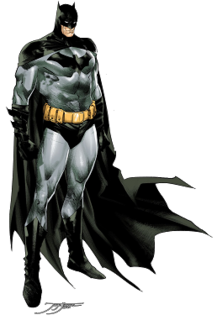 W
WBatsuit is the costume of the fictional superhero Batman, who appears in American comic books published by DC Comics. The suit has been depicted in various ways, and the stories themselves have described Batman as modifying the details of his costume from time to time. However, it usually consists of a grey body suit, the chest emblazoned with a stylized black bat either with or without a yellow ellipse around it, and blue-black accessories: a wide scalloped cape, gloves with a series of fin-like projections, boots, and a close-fitting cowl with ear-like projections to suggest a bat's head; and a yellow or gold utility belt containing a variety of gadgets.
 W
WIn Breton tradition, a coiffe bigoudène is a women's coif worn with traditional Breton costumes. By extension, the women wearing the coif and the costume associated with it are also called bigoudènes. The coif is about 30 cm high, and up to 40 cm in Penmarc'h.
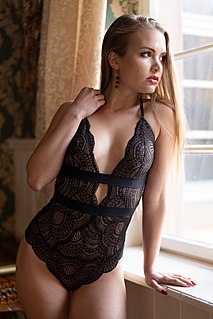 W
WA bodysuit is a one-piece form-fitting or skin-tight garment that covers the torso and the crotch, and sometimes the legs, hands, and feet, and cannot be used as a swimsuit. The style of a basic bodysuit is similar to a one-piece swimsuit and a leotard, though the materials may vary. A bodysuit, unlike a swimsuit or leotard, has snaps, hooks or velcro at the crotch. Thong or T-front thong bodysuits usually have the crotch opening moved up to the front to underbelly area to increase the wearer's comfort. A bodysuit may have sleeves and varying shoulder strap and collar styles. Bodysuits can be made from a number of fabrics, including cotton, lace, nylon, etc. In general, textile bodysuits include expandable fiber such as spandex for a better fit to the shape of the body.
 W
WA catsuit is a one-piece form-fitting garment that covers the torso and the legs, and frequently the arms. They are usually made from stretchable material, such as lycra, chiffon, spandex, latex, or velour, but may use less elastic materials, such as leather or PVC. Catsuits frequently close by means of a zipper at the front or back. A catsuit is regarded as outerwear, but not normally street wear. Catsuits are also used for sexualization or other types of sexuality.
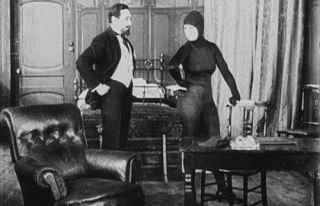 W
WCatsuits are a recurring costume for fictional characters in various media, as well as for entertainers, especially for use in musical performances. They are sometimes referred to as "bodysuits", especially in reference to a full-body suit worn by a man ; catsuit is typically used only in reference to women.
 W
WA cloak is a type of loose garment that is worn over indoor clothing and serves the same purpose as an overcoat; it protects the wearer from the cold, rain or wind for example, or it may form part of a fashionable outfit or uniform. Cloaks have been used by myriad historic societies; many climates favor wearing a full-body garment which is easily removed and does not constrain the wearer with sleeves. Over time cloak designs have been changed to match fashion and available textiles.
 W
WCosplay, a portmanteau of the words "costume play", is an activity and performance art in which participants called cosplayers wear costumes and fashion accessories to represent a specific character. Cosplayers often interact to create a subculture, and a broader use of the term "cosplay" applies to any costumed role-playing in venues apart from the stage. Any entity that lends itself to dramatic interpretation may be taken up as a subject. Favorite sources include anime, cartoons, comic books, manga, television series, and video games.
 W
WCostume is the distinctive style of dress or cosmetic of an individual or group that reflects class, gender, profession, ethnicity, nationality, activity or epoch. In short costume is a cultural visual of the people.
 W
WA costume book is a collection of images or figures of dress worn by different people of different ranks and places. It emerged as a pictorial genre in the sixteenth century in Europe. Earlier costume books include figures from around the world. They are sometimes accompanied by text describing the costume and customs. An example of a costume book by Cesare Vecchelio is Degli habit antichi et modern di diverse parti del mondo, published in Venice by Damaro Zen in 1590 and subsequently revised and published by the Sessa brothers in 1598 under the title Habiti antichi et modern di tutto il mondo.
 W
WA domino mask is a small, often rounded mask covering only the area around the eyes and the space between them. The masks have seen special prevalence since the 18th century, when they became traditional wear in particular local manifestations of Carnival, particularly with Venetian Carnival. Domino masks have found their way into a variety of high and popular art forms.
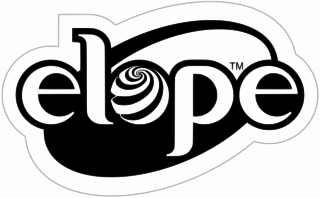 W
Welope, Inc. is an American company headquartered in Colorado Springs, Colorado that designs, manufactures, and distributes costumes and accessories. The name is an acronym for "Everybody is Laughing on Planet Earth," a phrase they trademarked in November 2013. As of 2016, the company's headquarters is staffed by 45 employees, with an additional 325 factory employees in Guangzhou, China.
 W
W"Fake Mustache" is also the name of a book by Tom Angleberger.
 W
WA fatsuit is a bodysuit-like undergarment used to thicken the appearance of an actress or actor of light to medium build into an overweight or obese character, in conjunction with prosthetic makeup. Other spellings include fat suit and fat-suit. Fatsuits worn by characters are either deliberately visible or mainly concealed. Most are intended as unseen body padding beneath a costume, others appear as realistic flesh and are viewed directly. A fatsuit is often used to provide comedic effect, as in "Weird Al" Yankovic's music video for "Fat", The Bluetones' music video for "Marblehead Johnson", the video for "Keine Lust" by the German band Rammstein, and the episode ”The Cooper Extraction” of The Big Bang Theory.
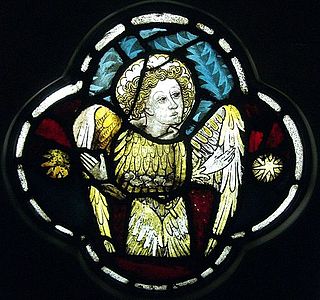 W
WFeather tights is the name usually given by art historians to a form of costume seen on Late Medieval depictions of angels, which shows them as if wearing a body suit with large scale-like overlapping downward-pointing elements representing feathers, as well as having large wings. Other sources use feathered angels to describe the style. The style is assumed to derive from actual costumes worn by those playing angels in medieval religious drama, with the "feathered" elements presumably flaps or lappets of cloth or leather sewn onto a body suit. The feathers on angels in art can often to be seen to stop abruptly at the neck, wrists and ankles, sometimes with a visible hemline, reflecting these originals.
 W
WFrench maid was a term applied in the Victorian and early 20th century periods to a lady's maid of French nationality. A lady’s maid was a senior servant who reported directly to the lady of the house, and accompanied her mistress on travel. She helped her mistress with her appearance, including make-up, hairdressing, clothing, jewellery, and shoes, and sometimes served as confidante. A maid of French nationality was considered likely to be more expert in current fashions, and was also able to apply her knowledge of the French language when travelling in Europe.
 W
WThe hennin was a headdress in the shape of a cone, steeple, or truncated cone worn in the late Middle Ages by European women of the nobility. They were most common in Burgundy and France, but also elsewhere, especially at the English courts, and in Northern Europe, Hungary and Poland. They are little seen in Italy. It is unclear what styles the word hennin described at the time, though it is recorded as being used in French in 1428, probably before the conical style appeared. The word does not appear in English until the 19th century. The term is therefore used by some writers on costume for other female head-dresses of the period.
 W
WAn illusion costume is a costume that fools the eyes by making it seem that the person in the costume is riding an animal, being held by another person, or many other things. The most common is the rider, in which the "rider" (person) gives the illusion of riding an animal; the person's legs go through the hollowed-out animal legs, along with fake legs dangling off the wearer's body to finish off the illusion.
 W
WAn inflatable costume or air-inflated costume is a costume that is inflated around the wearer by means of a battery-powered blower that sucks air into the costume. These costumes usually stand 9–10 feet tall when inflated.
 W
WKumadori (隈取) is the stage makeup worn by kabuki actors, mostly when performing kabuki plays in the aragoto style. The term also applies to a painting method in which two brushes are used simultaneously, one for the color and the other used to create shading or other details.
 W
WA leotard is a unisex skin-tight one-piece garment that covers the body from the crotch to the shoulder. The garment was made famous by the French acrobatic performer Jules Léotard (1838–1870). There are sleeveless, short-sleeved, and long-sleeved leotards. A variation is the unitard, which also covers the legs.
 W
WModern dress is a term used in theatre and film to refer to productions of plays from the past in which the setting is updated to the present day, but the text is left relatively unchanged. For example, Baz Luhrmann's film Romeo + Juliet uses a relatively unaltered text of Shakespeare's play but updates the setting to contemporary America.
 W
WThe Museum of Historical Costume in Poland is a private museum located in a tenement house on Kwiatowa Street 14/2 in Poznan, Poland. Founded in December, 2018 by Anna Moryto.
 W
WA Playboy Bunny is a waitress at a Playboy Club. In the original Playboy Clubs that operated between 1960 and 1988, the Playboy bunnies were selected through standardized training and wore a "bunny suit" costume inspired by the tuxedo-wearing Playboy rabbit mascot. This costume consisted of a strapless corset teddy, bunny ears, black sheer-to-waist pantyhose, a bow tie, a collar, cuffs and a fluffy cottontail. In more recent Playboy Clubs, such as Sin City that was re-opened in 2006, Playboy bunnies wore slightly redesigned costumes that were based on the original bunny suit.
 W
WA robe is a loose-fitting outer garment. Unlike garments described as capes or cloaks, robes usually have sleeves. The English word robe derives from Middle English robe ("garment"), borrowed from Old French robe, itself taken from the Frankish word *rouba, and is related to the word rob.
 W
WA Santa suit is a suit worn by a person portraying the legendary character Santa Claus. The modern American version of the suit can be attributed to the work of Thomas Nast for Harper's Weekly magazine, although it is often incorrectly thought that Haddon Sundblom designed the suit in his advertising work for The Coca-Cola Company. Sundblom's work did standardize the western image of Santa, and popularized the image of the red suit with white fur trim. This has become the image of the American Santa, while in some European countries where Saint Nicholas remains popular, the outfit worn is closer to religious clothing, including a Bishop's mitre.
 W
WSpirit gum is an adhesive, made mostly of SD Alcohol 35-A and resin originally consisting of mastix, used primarily for affixing costume prosthetics such as wigs, merkins, or false facial hair. It has been manufactured since at least the 1870s, and has long been a standard tool in theatrical performances where prosthetic makeup or affixed costuming is used. It was mentioned in the earliest known published theatre makeup manual: "How to make-up; a practical guide for amateurs by Haresfoot and Rouge" in 1877. At the end of the nineteenth century, spirit gum could be procured by performers at theatrical wig makers and it was removed with alcohol, cocoa butter or vaseline.
 W
WStage clothes is a term for any clothes used by performers on stage. The term is sometimes used only for those clothes which are specially made for the stage performance by a costume designer or picked out by a costume coordinator. Theatrical costumes can help actors portray characters' age, gender role, profession, social class, personality, and even information about the historical period/era, geographic location and time of day, as well as the season or weather of the theatrical performance. Stage clothes may be used to portray a historical look or they can be used to exaggerate some aspect of a character.
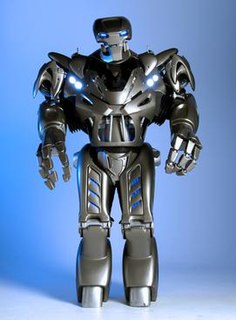 W
WTitan the Robot is a partially-mechanised robot costume developed by the British company Cyberstein Robots. It is approximately 8 feet tall and weighs 60 kg (9.4 st) which increases to 350 kg (55 st) including the cart it rides on and onboard equipment. The face resembles a skull, and some have even compared it to a Transformer. Titan has performed at a variety of public and private events, such as the Commonwealth Games, Bar Mitzvahs UK shopping centres, television fundraisers and live concerts. Entered the Chinese market in 2018 and operated by Tuxuan Robotics.
 W
WUniform fetishism is a particular type of clothing fetishism in which an individual is sexually aroused by uniforms. It is a form of sexual fetishism. Uniform fetishism has been associated with a variety of different uniforms, including schoolgirl and cheerleader uniforms, French maid uniforms, and uniforms associated with police or military organisations.
 W
WThe wardrobe supervisor is responsible for overseeing all wardrobe related activities during the course of a theatrical run or film shoot. The modern title "wardrobe supervisor" has evolved from the more traditional titles of "wardrobe mistress/master" or "mistress/master of the wardrobe". The wardrobe supervisor may be present at some production meetings and fittings, their primary responsibilities generally begin at the load-in stage of a production and during prep of a film. At load-in physical custody and responsibility for the costumes shifts from the costume designer and shop staff to the wardrobe supervisor.
 W
WWestern Costume is a costume warehouse in Hollywood, California which supplies costumes and costuming supplies to the film and TV industry. One of the oldest businesses in the industry, the company outdates any studio or production company currently in operation.
 W
WA zentai suit is a skin-tight garment that covers the entire body. The word is a portmanteau of zenshin taitsu. Zentai is most commonly made using nylon/spandex blends.
 W
W W
W W
W